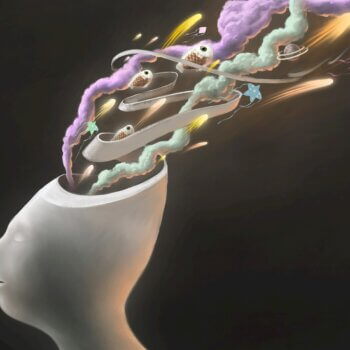Key Takeaways:
- Ukrainians are using Starlink’s antennas to provide connectivity to entire villages, and the company’s app has become one of the most downloaded in the country.
- Mykhailo Fedorov on Twitter The sincere appreciation of Ukrainians provides clear evidence of Starlink’s performance and, above all, its disruptive nature.
- Satellite internet connection used to be prohibitively expensive and provide generally very low bandwidth, practically unfeasible for regular use.
- Starlink has already obtained the approval of its service in thirty-two countries, the last two in Africa: Nigeria and Mozambique.
- SpaceX has drastically reduced the cost of putting objects into orbit, having launched some 2,400 small satellites into LEO (Low Earth Orbit), which do not generate space debris because they burn up completely during their controlled re-entry into the atmosphere at the end of their useful life, and at the same time, has created a very competitive company when it comes to providing Internet access in places where a wired connection does not reach.
- Again, a masterclass in leveraging economies of scale and shared costs in business development.
Ukraine’s Deputy Prime Minister and Minister of Digital Transformation, Mykhailo Fedorov, has thanked Starlink and its CEO, Elon Musk for sending more than 10,000 satellite internet receiver units to the country in the wake of the Russian invasion, and explains in a tweet with a video how these easy-to-use units requiring very few connection and power supplies, are providing many people with connectivity in a country devastated by an invader determined to silence it by attacking its connectivity infrastructure. Ukrainians are using Starlink’s antennas to provide connectivity to entire villages, and the company’s app has become one of the most downloaded in the country.

The sincere appreciation of Ukrainians provides clear evidence of Starlink’s performance and, above all, its disruptive nature. Satellite internet connection used to be prohibitively expensive and provide generally very low bandwidth, practically unfeasible for regular use. Starlink, however, manages to establish a connection comparable to fiber, and with a latency that makes it possible to play video games.
Starlink has already obtained the approval of its service in thirty-two countries, the last two in Africa: Nigeria and Mozambique. The map provided by the company itself shows all of Europe, the United States, Mexico, New Zealand, parts of Brazil and Australia, and a good number of countries in Africa, South America and Asia that are expected to be approved in the coming months. In some of these countries, the price of the connection equipment and the monthly connection fee is still very expensive, considering average incomes, but is affordable as a shared connection, and is better than no internet, making it possible to think of ways to bring connectivity to places that would otherwise be a unconnected.
But the best part of it is the company’s approach: Starlink was created primarily as a way to ensure that SpaceX launches could be fully loaded to justify their cost, at a time when it was still difficult for the company to obtain customers due to its lack of proven experience in the industry. When few countries would risk entrusting the launch of their expensive satellites to SpaceX because it was a company with little experience, the space on its rockets was filled with its own Starlink satellites. Now, thanks to SpaceX and its extremely strong launch business, getting a satellite into orbit has become much simpler and, above all, much, much cheaper.
SpaceX has drastically reduced the cost of putting objects into orbit, having launched some 2,400 small satellites into LEO (Low Earth Orbit), which do not generate space debris because they burn up completely during their controlled re-entry into the atmosphere at the end of their useful life, and at the same time, has created a very competitive company when it comes to providing Internet access in places where a wired connection does not reach. Again, a masterclass in leveraging economies of scale and shared costs in business development.





























